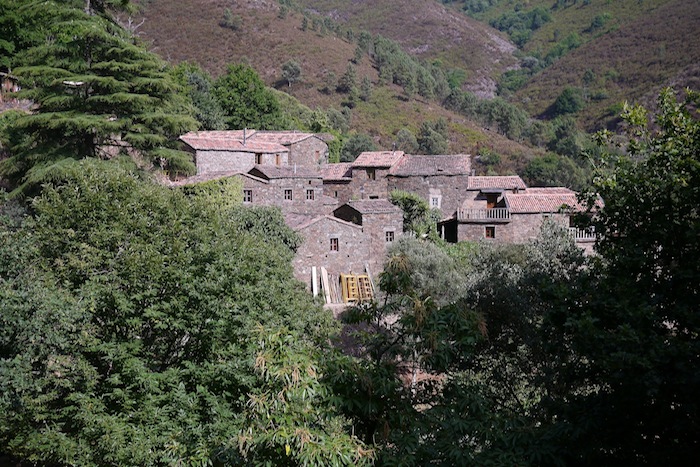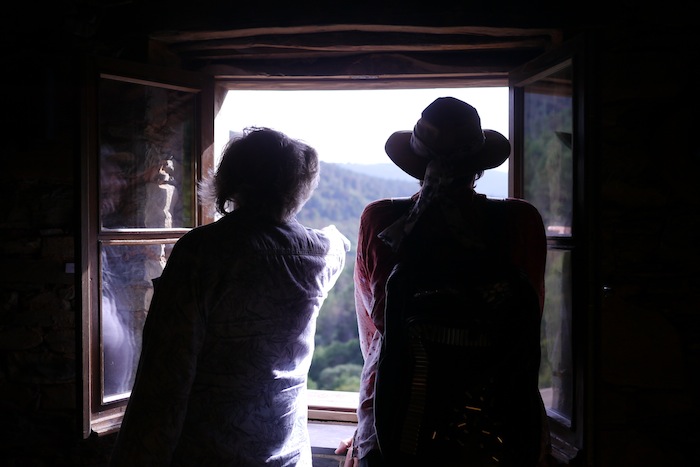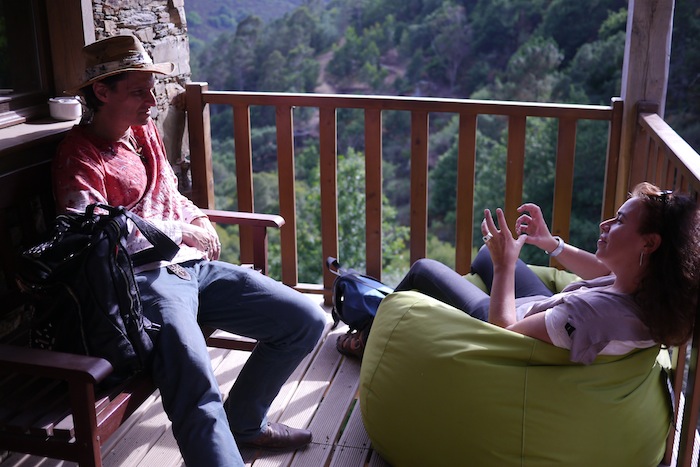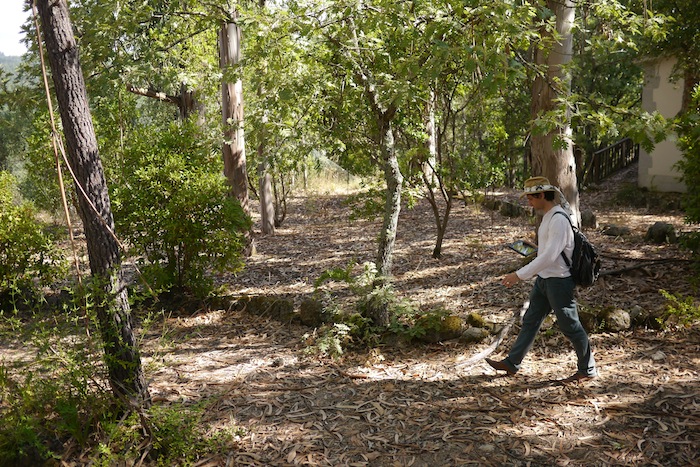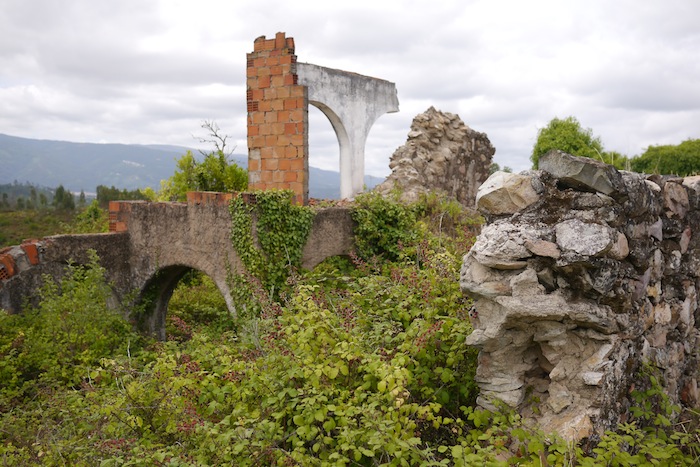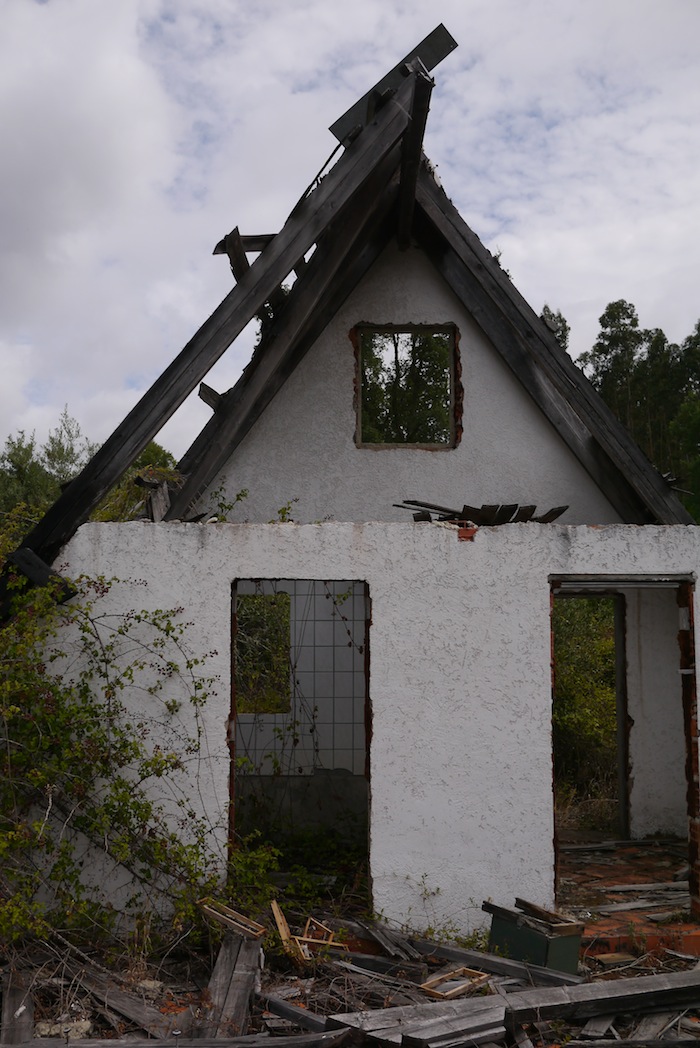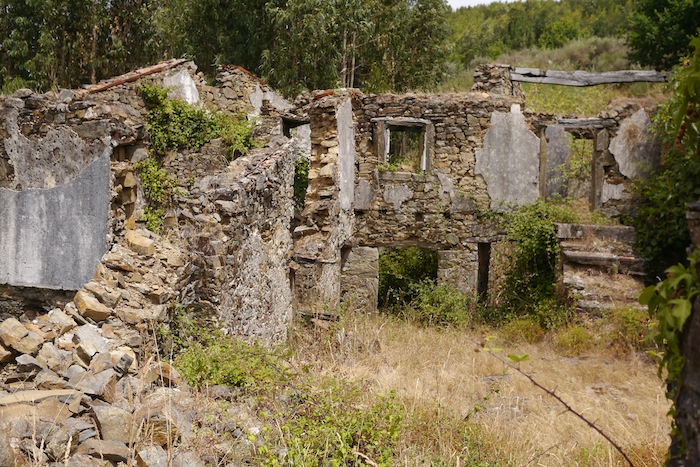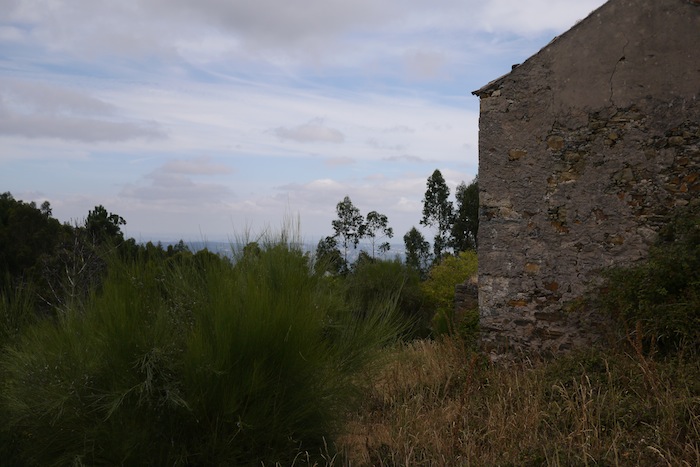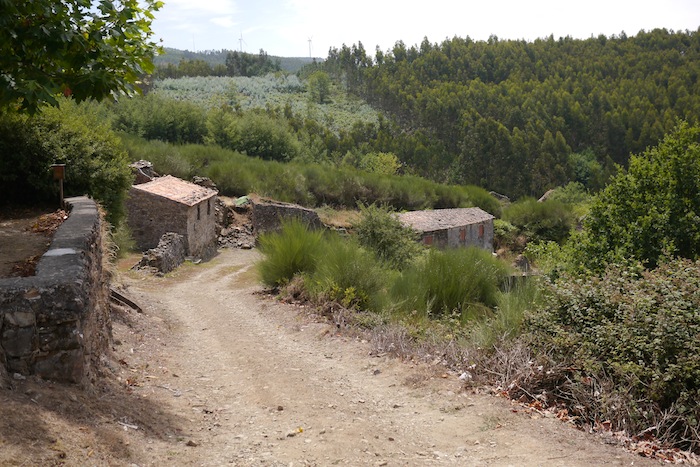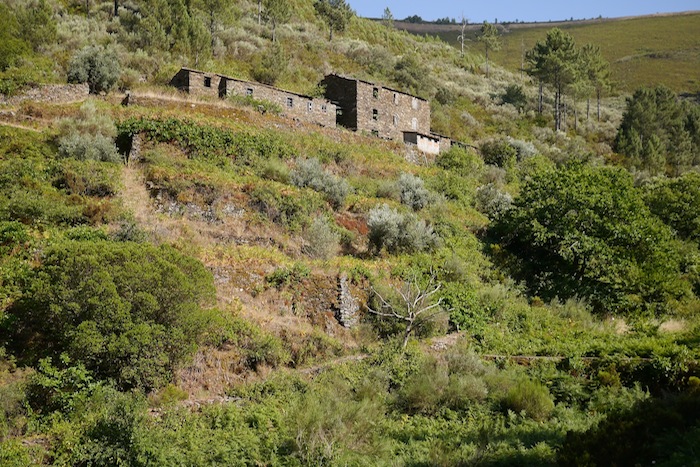[vc_row content_placement=”middle”][vc_column width=”1/2″ offset=”vc_col-lg-offset-3 vc_col-lg-6 vc_col-md-offset-3 vc_col-md-6 vc_col-xs-12″][vc_column_text]
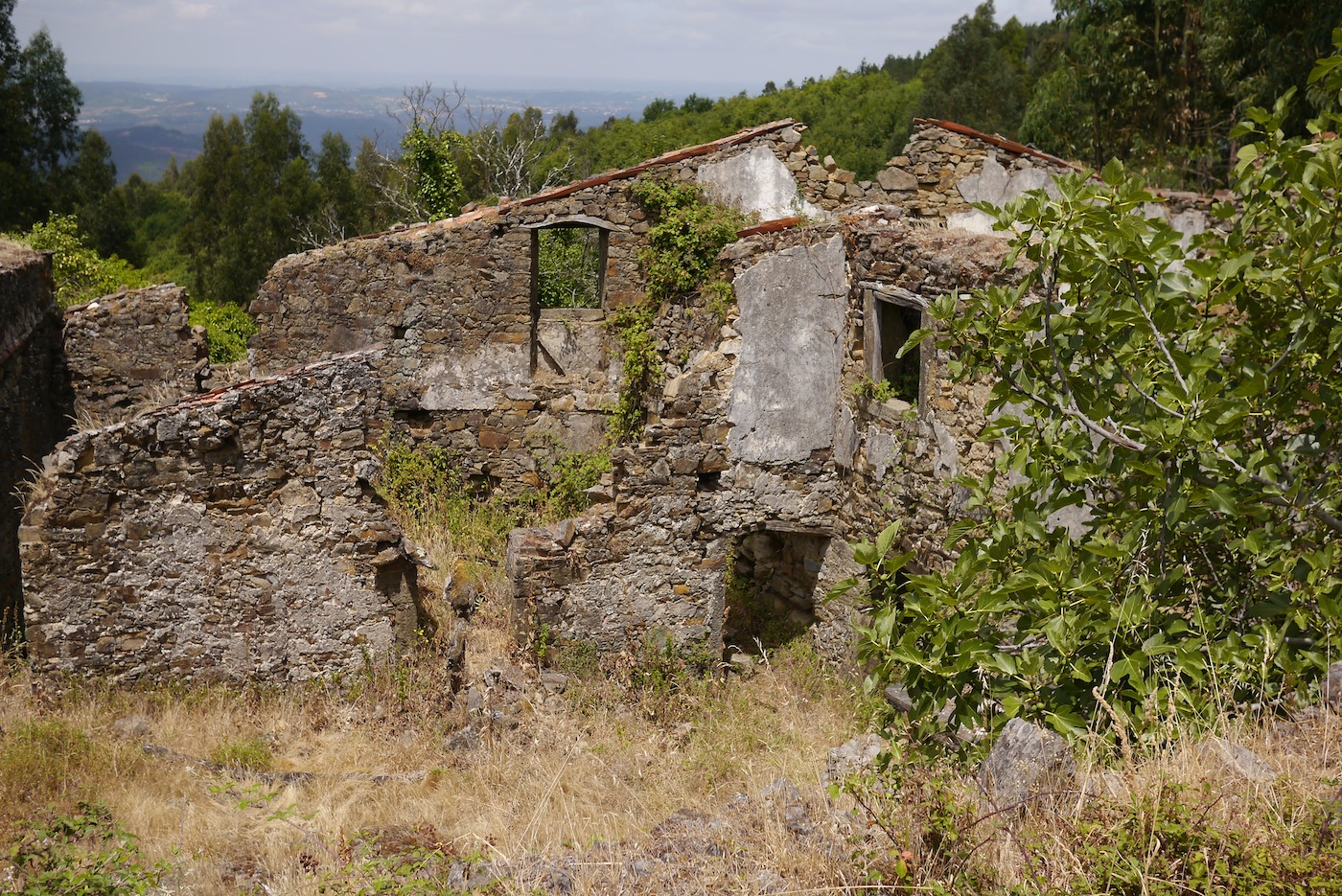 This weekend we spend three days in the area of Lousa, just east of Coimbra. On the first day we started with an extensive discussion with the real-estate agent and an architect specialising in natural building. The key learning points where:
This weekend we spend three days in the area of Lousa, just east of Coimbra. On the first day we started with an extensive discussion with the real-estate agent and an architect specialising in natural building. The key learning points where:
- There are two basic types of land classification in Portugal in the countryside – agricultural and ecological reserve, it is almost impossible to get building permission on land zoned as ecological reserve, on agricultural land it is also quite hard thus buying land with lots of ruins is ideal – they already have the permissions to build
- In order to build legally need an engineer to sign off on the design, this is difficult for a natural-built house but there are some engineers in Portugal who can sign-off on a rammed-earth house, perhaps some who understand Cob.
Cerdeira village
As an example of the kind of village rebuilding which is possible we started by touring Cerdeira village.
Cerdeira is a beautiful village hanging on the side of a mountain at the end of a steep valley with a spectacular view. The restoration of Cerdeira was started by a German woman and now there are a number of people living there. They do cultural events, exhibit crafts objects, have workshops and a cafe. They are also supported by Municipality, which resurfaced the dirt road with asphalt and supports their cultural activities.
The houses have been restored as workshops, art galleries and housing for rent for tourists and art retreats.
There is a lot of activity but the restoration work looks to be done largely using modern materials (concrete & etc.)
Pedra da Se
Pedra da Se was shown to us as an example of the kinds of properties which exist, but not as something which we would likely be interested in. It consists of 12 houses constructed as tourist cottages, each with two or more rooms and modern amenities such as bathrooms, cable TV, etc.
The site is located on a small hill overlooking a big river in the distance (~1km away?). The property has lots of trees and shade, but the land looks quite poor and has never been calculated (how ever did they get building permission on such a natural land?) It is a beautiful land but the layout feels dead, the structures do not work together.
We don’t know the price of this property but the estate agent estimates as around €1 million.
Abandoned houses #1
This site is 3-4 hectares of land with about 10 of ruins of mid-20th century buildings surrounded by eucalyptus forest with a dirt road going through the site and above it. There is limited flat space for community buildings. The site includes a cement catchment for rainwater.
The site is on top of a small hill with a good view but feels very exposed, does not feel cosy. The surrounding forest is mostly eucalyptus and the surrounding area has a huge amount of eucalyptus.
The site does not feel like it has character or personality, and there is no running water in the area.
Real estate agent estimates price at €300-400,000.
Two neighbouring abandoned mountain villages
The third site we saw is on the mountain overlooking Lousa, a quite beautiful site with two small abandoned villages. Even though it is at the side of the mountain it is low enough on the mountain and the slope is gentle enough that it does not have the crazy eagle’s next feeling of Cerdeira of being exposed and hanging onto the side of a cliff.
The land includes a small church and a one-room school house. There is not much horizontal space, but given that we are not planning to do major agriculture there is probably enough. There are probably about 20 ruins in the upper village and perhaps 10 in the lower with some others spread around the land so building permissions should not be an issue, however the traditional houses are quite small so to build a house of modern comfort will likely require joining two adjacent properties. Somewhere below the village on the land there is stream but we didn’t go down and see it, it’s not large in any case.
Price is unknown but the real-estate agent estimates as around €1 million.
Quinta de Belide
Quinta de Belide is the land we originally found online, as is often the case the reality was very different from the online images and description. The land is in a very remote valley with access only by small footpath from a dirt road. It is a very steep valley with very little flat areas for any community buildings, etc. There are only 3 ruins of houses the rest being agricultural buildings and no surrounding space to build.
A great place for a monastic retreat house perhaps, but definitely not modern living or a community the size of EarthSkyLab.
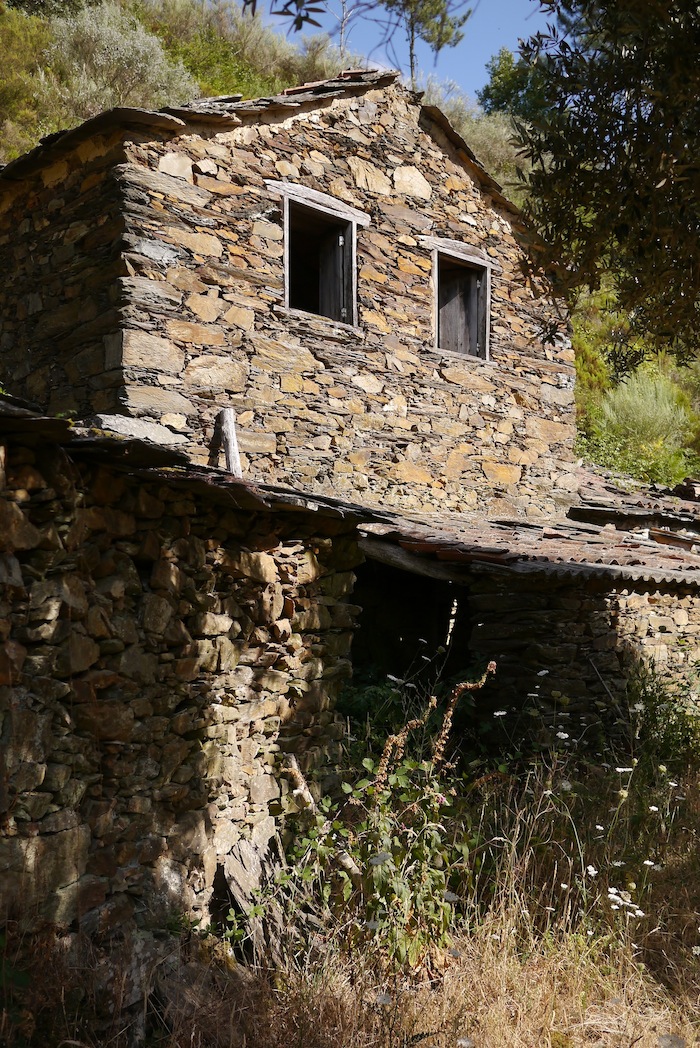 Conclusions
Conclusions
We love Portugal, however there is a very wide variety of landscapes and environments even within a 30km radius. Sadly many areas have been planted with mono-culture of eucalyptus trees. Such monoculture forests besides being aesthetically monotonous and unattractive, environmentally destructive are a great source of fires and thus dangerous to live around.
It is clear that we need more time to do the search around the regions of interest. Of course to properly understand a region we need time to live on the land.
We look forward to coming back to Portugal and continuing our explorations, join us this winter!
[/vc_column_text][/vc_column][/vc_row]
